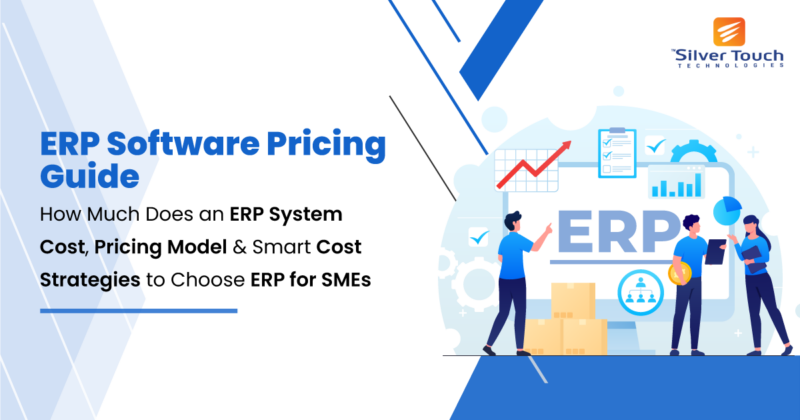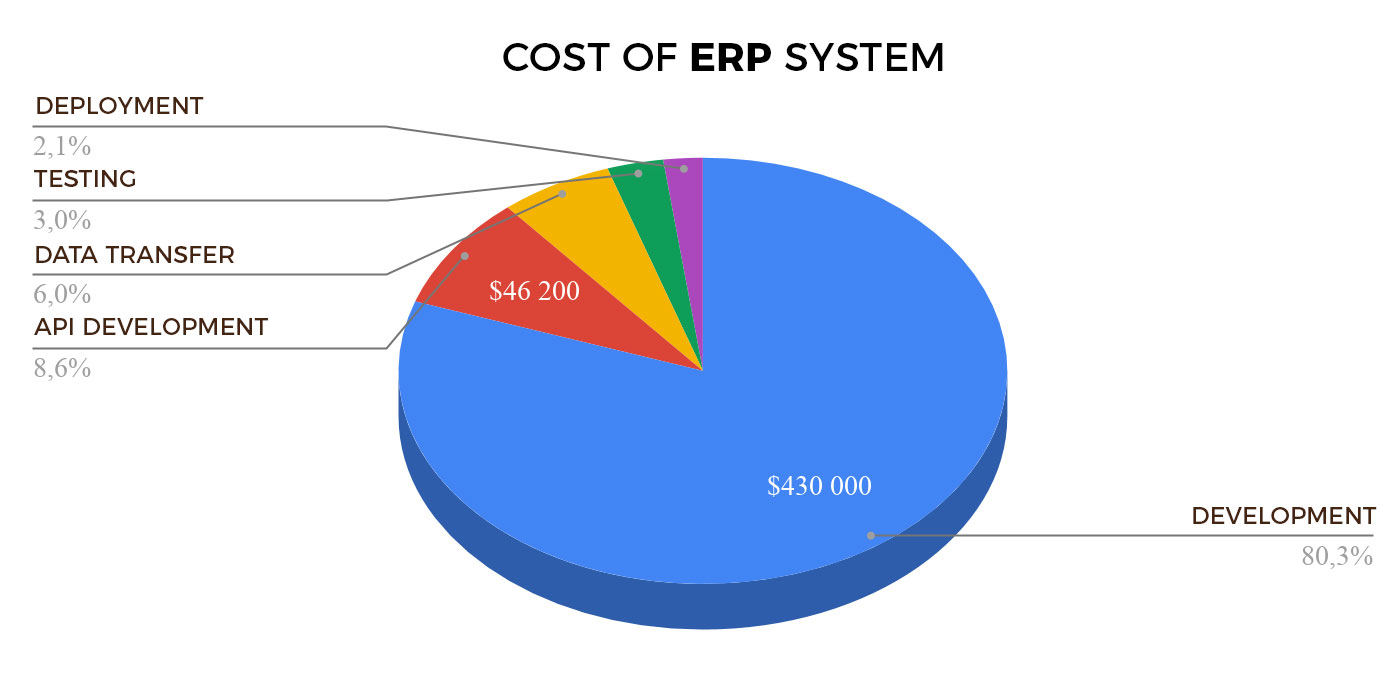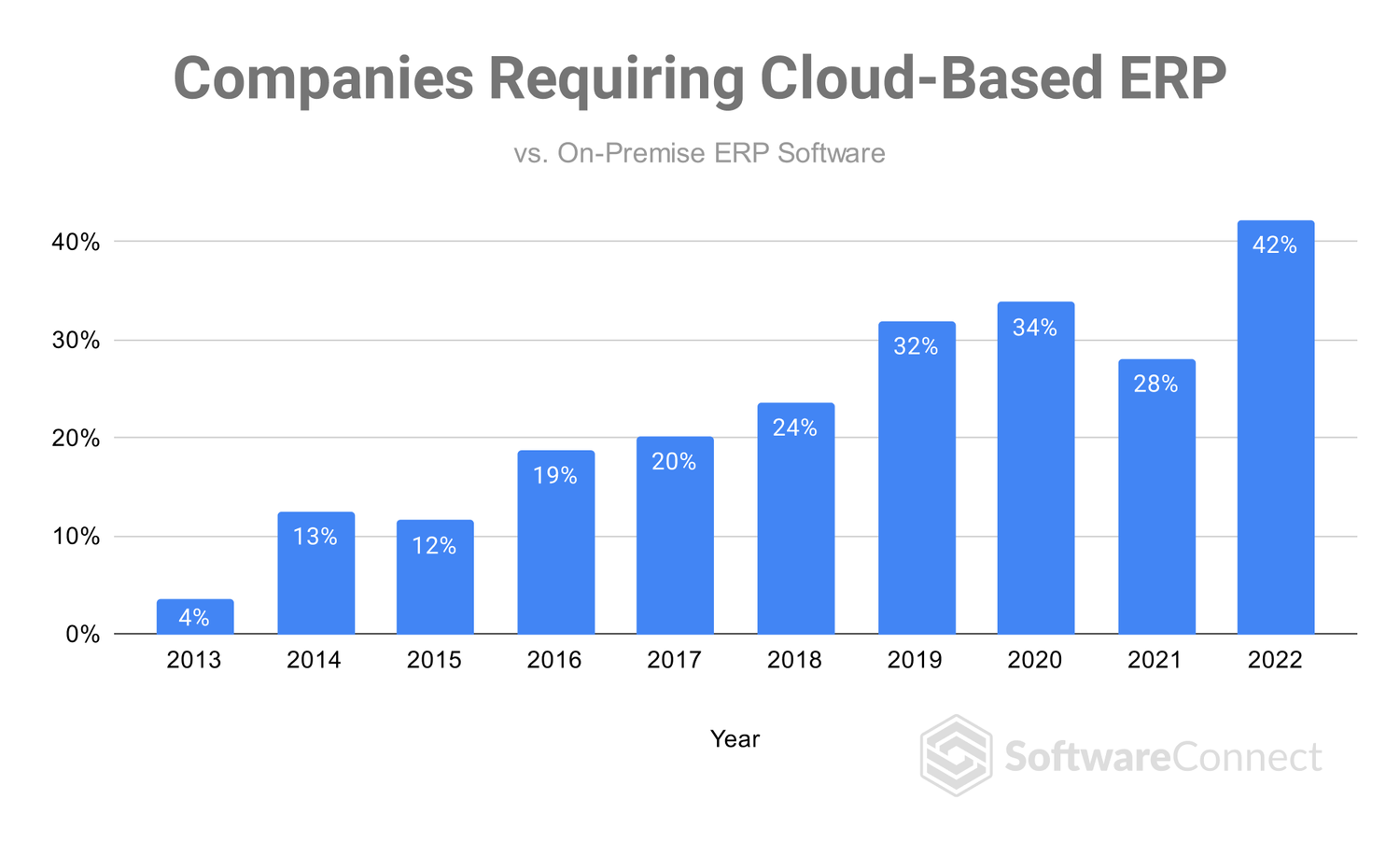In today’s fast-paced and competitive business landscape, efficient management of operations is crucial for success. This is where Enterprise Resource Planning (ERP) software comes into play, offering a comprehensive solution for streamlining and integrating various business processes. From inventory management to accounting and human resources, ERP software provides a centralized platform for managing critical aspects of your organization.
Mục lục

However, when it comes to implementing an ERP system, one key factor that cannot be overlooked is the pricing. As a savvy business owner or decision-maker, it’s important to consider erp software prices to ensure that you make an informed investment that aligns with your budget and requirements. After all, you wouldn’t want to end up with an ERP solution that exceeds your financial capabilities or falls short in meeting your business needs.
Now, you might be wondering, why is considering ERP software prices so significant? Well, let me put it this way: imagine you’re embarking on a journey and need a reliable vehicle to reach your destination. While you have various options available, you wouldn’t want to spend an exorbitant amount on a luxury car if a more affordable and efficient option can serve your purpose just as well. Similarly, understanding ERP software prices can help you choose the most suitable solution that fits your budget while providing the necessary features and functionalities for your business operations.
In the next sections, we will delve deeper into the various factors influencing ERP software prices, explore different pricing models offered by providers, analyze the average cost range, and provide valuable tips for evaluating ERP software prices. So, fasten your seatbelt and let’s embark on this ERP software pricing journey together!
Understanding ERP Software Prices

When it comes to understanding ERP software prices, it’s essential to grasp the factors that influence these costs. ERP software prices encompass various components, including licensing fees, implementation costs, customization expenses, and ongoing maintenance charges. Let’s explore these factors in more detail:
Factors Influencing ERP Software Pricing
a. Size and Complexity of the Organization
The size and complexity of your organization play a significant role in determining ERP software prices. Larger organizations with multiple departments and extensive operations typically require more robust and scalable ERP solutions, which often come at a higher cost. On the other hand, smaller businesses may opt for more affordable ERP software that suits their specific needs.
b. Number of Users and Modules Required
The number of users and the specific modules needed within the ERP system can impact the pricing structure. If your organization has a large number of users who require access to the software, it may result in higher licensing costs. Additionally, the number of modules and their complexity can also influence the overall price, as more advanced functionalities often come with a higher price tag.
c. Deployment Options (Cloud-based or On-Premise)
The deployment option you choose, whether cloud-based or on-premise, can have a significant impact on ERP software prices. Cloud-based solutions generally involve a subscription-based pricing model, where you pay a recurring fee. On-premise solutions, on the other hand, often require a one-time licensing fee, along with additional costs for hardware and maintenance.
d. Customization and Integration Needs
Every organization has unique requirements and may need customization and integration capabilities within their ERP system. Customization involves tailoring the software to align with specific business processes, which can incur additional costs. Integration with other existing systems, such as CRM or supply chain management, may also impact the overall pricing.
e. Support and Maintenance Costs
Support and maintenance services are crucial for ensuring the smooth functioning of your ERP software. Providers may offer different support tiers, each with varying costs. It’s important to consider ongoing support and maintenance expenses when evaluating ERP software prices.
By understanding these factors, you can gain insight into the pricing structure of ERP software and make informed decisions that align with your organization’s needs and budget. In the next section, we will explore the different types of pricing models offered by ERP software providers.
Types of ERP Software Pricing Models

When it comes to ERP software pricing, different providers offer various pricing models to cater to the diverse needs of businesses. Understanding these pricing models can help you make an informed decision based on your budget and operational requirements. Let’s take a closer look at the different types of ERP software pricing models available:
Perpetual License
Under the perpetual license model, businesses purchase a license upfront, granting them the right to use the ERP software indefinitely. This model often involves a significant initial investment but allows for full ownership of the software. Additional costs may be incurred for maintenance, updates, and support.
Subscription-based
The subscription-based pricing model, also known as Software-as-a-Service (SaaS), involves paying a recurring fee to access and use the ERP software. This model typically offers flexible payment options, allowing businesses to scale up or down as needed. It also includes maintenance, updates, and support as part of the subscription package.
Usage-based
In the usage-based pricing model, businesses pay based on the actual usage of the ERP software. This model is particularly suitable for organizations with fluctuating usage patterns or seasonal demands. It offers cost-efficiency by charging according to the resources consumed, such as the number of users or transactions processed.
Tiered pricing
Under the tiered pricing model, ERP software providers offer different pricing tiers or packages with varying features and capabilities. Each tier corresponds to different price points, allowing businesses to choose the package that best aligns with their needs and budget. This model offers flexibility and scalability, with the option to upgrade or downgrade as requirements change.
Custom pricing
Some ERP software providers offer custom pricing models tailored to the specific needs of individual businesses. This involves personalized negotiations and pricing based on factors like organizational size, industry, and unique requirements. Custom pricing allows for a more tailored solution but may require more extensive discussions with the provider.
By familiarizing yourself with these different ERP software pricing models, you can better evaluate which option suits your business best. Remember, each model has its pros and cons, so it’s essential to assess your budget, scalability needs, and long-term objectives to make an informed decision.
Average ERP Software Prices

When it comes to ERP software prices, it’s essential to have a clear understanding of the average cost range before making any purchasing decisions. The cost of ERP software can vary significantly depending on several factors, including the size and complexity of your organization, the number of users and modules required, the deployment options, customization and integration needs, as well as support and maintenance costs.
Within the average range, ERP software prices typically start from a few thousand dollars and can go up to several hundred thousand dollars. However, it’s important to note that these figures are just a ballpark estimate and can vary based on the specific requirements of your organization.
Factors such as the number of users and modules needed can have a direct impact on the pricing. Generally, the more users and modules you require, the higher the cost will be. Similarly, if your organization has complex business processes that require extensive customization and integration, it’s likely to incur additional expenses.
To give you a better idea of the pricing structures in the ERP software market, let’s take a look at a few examples of popular ERP software solutions and their pricing models:
1. SAP ERP
SAP ERP is a leading ERP software provider known for its robust features and scalability. Their pricing structure is usually based on a tiered model, where the cost increases as you move up the tiers. The pricing is tailored to the specific needs of each organization, considering factors such as the number of users, modules, and deployment options.
2. Oracle ERP Cloud
Oracle ERP Cloud offers a cloud-based ERP solution with flexible pricing options. They typically offer subscription-based pricing, where you pay a monthly or annual fee based on the number of users and modules required. This allows businesses to scale their ERP system as they grow, without incurring significant upfront costs.
3. Microsoft Dynamics 365
Microsoft Dynamics 365 provides a comprehensive suite of ERP applications. Their pricing structure is based on a per-user, per-month model. The cost depends on the number of users and the specific applications you choose, enabling businesses to customize their ERP solution according to their needs and budget.
It’s important to note that these examples are just a glimpse of the pricing structures in the ERP software market. Each provider offers different packages and pricing options, so it’s crucial to evaluate multiple options and compare their features and costs to find the best fit for your organization.
In the next section, we will provide you with valuable tips for evaluating ERP software prices, enabling you to make an informed decision and find the right ERP solution that aligns with your budget and business requirements.
Tips for Evaluating ERP Software Prices

When it comes to evaluating ERP software prices, it’s essential to consider various factors to ensure you make a well-informed decision that aligns with your business goals and budget. Let’s delve into some key considerations that can help you assess ERP software prices effectively:
1. Total cost of ownership (TCO)
While the upfront price of ERP software may seem appealing, it’s vital to consider the total cost of ownership over the software’s lifespan. This includes not only the initial license or subscription fees but also factors like implementation costs, customization expenses, training fees, ongoing support, and maintenance charges. Evaluating the TCO will provide a more accurate picture of the long-term financial commitment associated with the ERP software.
2. Return on investment (ROI)
Assessing the potential return on investment is crucial when evaluating ERP software prices. Consider how the software can improve your business processes, increase efficiency, and drive revenue growth. Calculate the potential cost savings, productivity gains, and revenue increases that the ERP software can offer. By comparing the estimated ROI with the software’s price, you can determine its value and justify the investment.
3. Scalability and future growth considerations
As your business grows, so will your ERP software requirements. It is essential to choose a solution that is scalable and can accommodate your future needs without significant disruptions or additional costs. Evaluate the software’s scalability features, such as the ability to add users, modules, or integrate with other systems as your business expands. This ensures that you don’t outgrow the ERP software too quickly, leading to unnecessary expenses down the road.
4. Hidden costs to look out for
When assessing ERP software prices, be vigilant about hidden costs that may not be apparent initially. These can include additional charges for customizations, data migration, technical support, software updates, or even penalties for exceeding user or storage limits. Thoroughly review the pricing details and contract terms to identify any potential hidden costs that could impact your overall budget.
5. Negotiation strategies for better pricing
Don’t be afraid to negotiate with ERP software providers to secure better pricing. Explore options like volume discounts, extended payment terms, or bundling services to negotiate a more favorable deal. Remember, the software provider wants your business, so it’s worth discussing your requirements and budget constraints to find a mutually beneficial agreement.
By considering these factors and applying effective negotiation strategies, you can evaluate ERP software prices more comprehensively and make an informed decision that meets your budget and business needs. Let’s move on to the next section to explore the conclusions of this ERP software pricing journey!
Conclusion

In conclusion, when it comes to implementing ERP software, considering the prices is of utmost importance. ERP software plays a vital role in streamlining business operations and improving overall efficiency. However, investing in the right solution that aligns with your budget and needs is crucial for long-term success.
Throughout this article, we have explored the significance of ERP software prices and the factors that influence them. We have discussed different pricing models, average cost ranges, and provided valuable tips for evaluating ERP software prices.
Remember, conducting thorough research and evaluation is key before making a decision. Consider the total cost of ownership, return on investment, scalability, hidden costs, and negotiation strategies. By taking these factors into account, you can make an informed decision that meets your business requirements and budget constraints.
When it comes to ERP software prices, ebest.vn is here to help. As a trusted provider of ERP solutions, ebest.vn offers a range of affordable and feature-rich options that cater to businesses of all sizes. Visit erp.ebest.vn to explore our offerings and find the perfect ERP software for your organization.